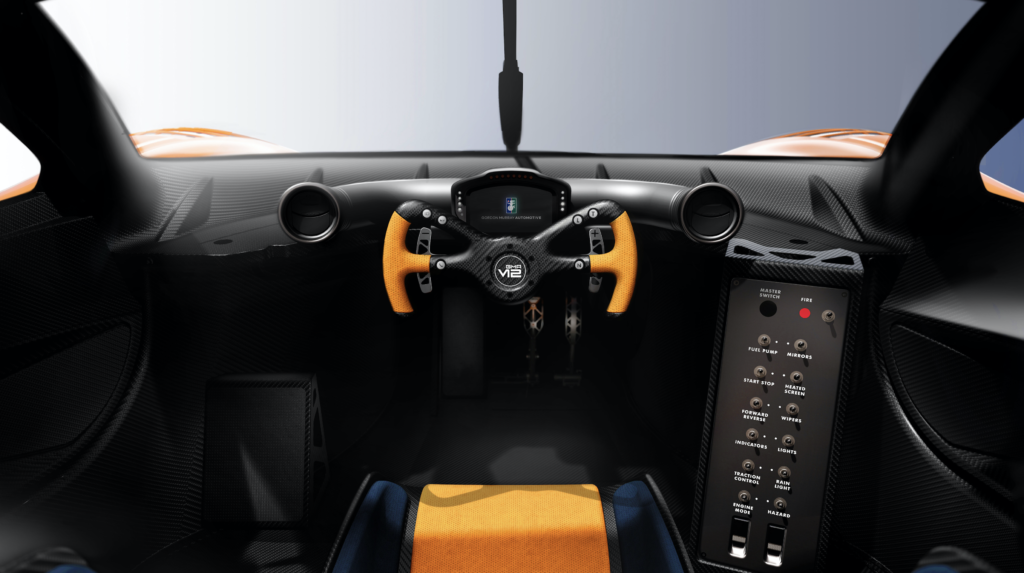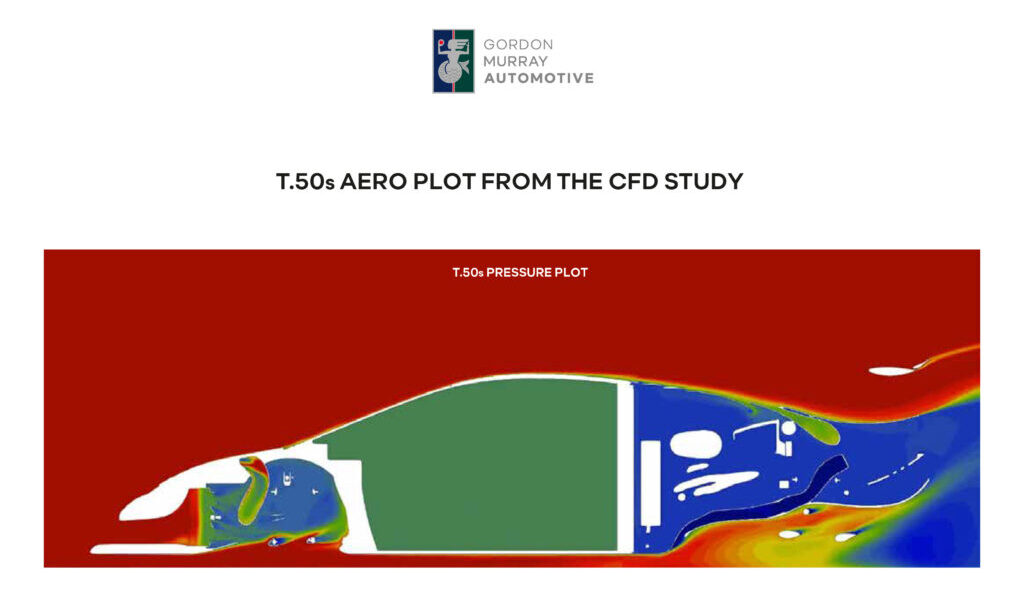Gordon Murray Automotive has unveiled its T.50s Niki Lauda track-focused supercar. Developed in parallel with the T.50, the T.50s has, the designer says, been conceived, designed and engineered to offer the ultimate on-track driving experience.
It weighs just 852kg and will be powered by a revised V12, producing 725bhp, revving to 12,100rpm which is deployed through an Xtrac-developed 6-speed paddle-shift gearbox.
The Cosworth-designed and manufactured 3.9-liter V12 engine is a substantially different version of the engine that powers the T.50. The maximum torque figure is 485Nm, produced at 9,000rpm. At 178bhp/liter, the specific power output of the T.50s V12 exceeds that of the classic Cosworth DFV Formula 1 engine while the car’s power-to-weight ratio of 835ps/metric ton betters that of a naturally aspirated LMP1 car.
The engine is fed by a newly designed, roof-mounted ram induction airbox (which can increase maximum power to 725bhp at speed). Other changes to the engine include revised cylinder heads and camshafts, plus a higher compression ratio of 15:1, coupled to a freer flowing exhaust.
The latest iteration of the Cosworth GMA V12 weighs just 162kg, 16kg less than the road car engine, which was already the lightest road-going V12 engine ever. The weight-saving measures extend to the intake, exhaust and control systems, as well as the engine itself. All the valves are made from titanium, while there is no variable valve timing (unlike on the T.50) due to the additional weight of the geartrain and electronic control system.
 Meanwhile, a simpler induction system features 12 throttle bodies on top of the engine. The exhaust system does without catalytic converters, has thinner Inconel walls and, with only track noise limits to meet, benefits from smaller silencers.
Meanwhile, a simpler induction system features 12 throttle bodies on top of the engine. The exhaust system does without catalytic converters, has thinner Inconel walls and, with only track noise limits to meet, benefits from smaller silencers.
A bespoke Xtrac IGS (Instantaneous Gearshift) 6-speed paddle shift gearbox has been fitted and, as part of Xtrac’s efforts to minimize weight wherever possible, even the gears are lighter than in the T.50, contributing to a 5kg total weight reduction. Both the gearbox and the clutch are electronically actuated.
Ratios have been chosen to optimize on-track performance and driver enjoyment and engagement, delivering a top speed of approximately 200-210mph. A set of closer ratios for shorter circuits will also be offered.

The T.50s utilizes the same forged aluminum front and rear double wishbone suspension system as the standard car, however, the springs, dampers and anti-roll bar have been respecified, while the ride height has been lowered to 87mm at the front and 116mm at the rear. The steering system also has revised ratios.
The car features a thoroughly revised aero package, capable of producing 1,500kg of downforce. Revisions include a 1,758mm-wide, rear-mounted delta wing, the design of which was inspired by the front wing on Murray’s 1983 Brabham BT52 Formula 1 car. The front features a splitter with a central aerofoil section to balance out downforce from the rear wing. Murray noted that the splitter’s central channel reduces the car’s sensitivity to pitch while allowing airflow under the car to continue to drive the central diffuser section, keeping the efficiency of the entire aero package high.
Front dive planes include horizontal elements paired with a vertical duct to manage wheel arch pressures and tire wake, further reducing drag and improving efficiency. Additionally, a pair of NACA ducts have also been positioned on the front clam shell in a region of high pressure and where the thin boundary layer is ideal for cooling the large front brakes. A central fin stretching from the top of the roof to the rear lip of the car has also been added for increased yaw stability. The large vertical face is presented to the airflow during high-speed cornering and helps counteract the momentum of the car toward the outside of the corner.
To further improve airflow and accommodate the central fin, the oil cooling systems for the engine and transmission are now located in the sidepods. With the powertrain coolers located directly downstream of the front wheels, barge boards have been added to manage the turbulent wake emanating from the front wheel arches, ensuring a clean flow of air to the side ducts.
The car retains the same 400mm ground-effect fan, driven by the integrated 48V ISG, as the T.50, but operates in a single high-downforce mode, spinning at 7,000rpm. The aero package also has much simpler ducting than the road version, with a permanently open duct running down to the redesigned rear diffuser.
Gordon Murray noted that, “When we first ran the CFD we were already ahead of our downforce target. At one point we were achieving 1,900kg of downforce, but we backed it off to 1,500kg to make the car more manageable for the owners.”


